#A perfect reflection in Glacier National Park
Text

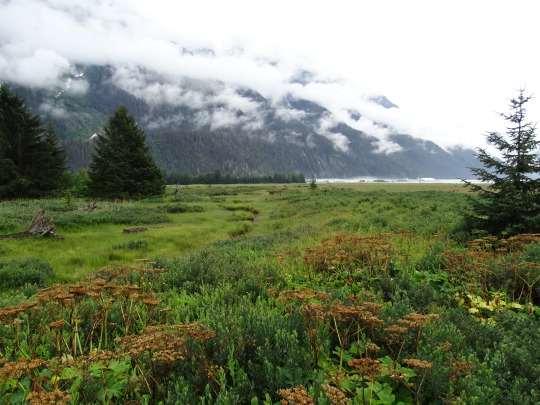

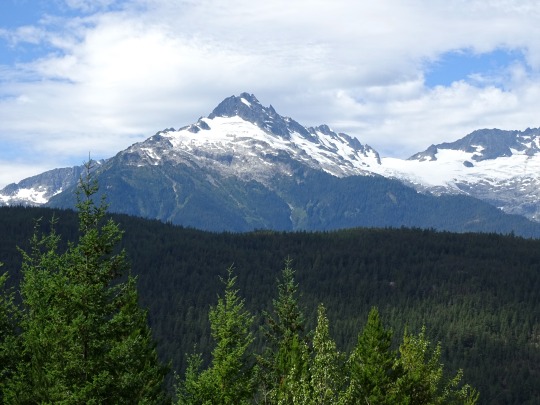











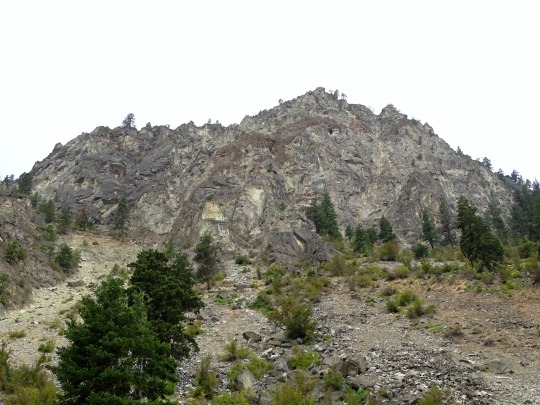


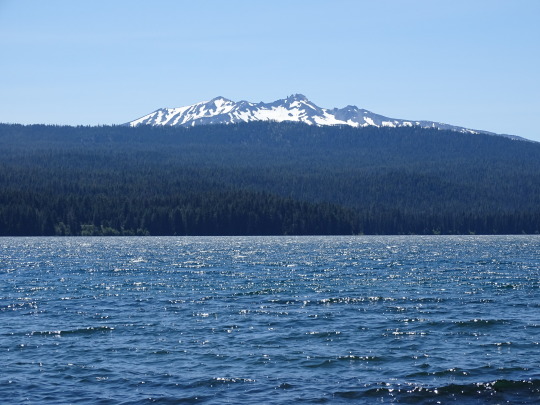
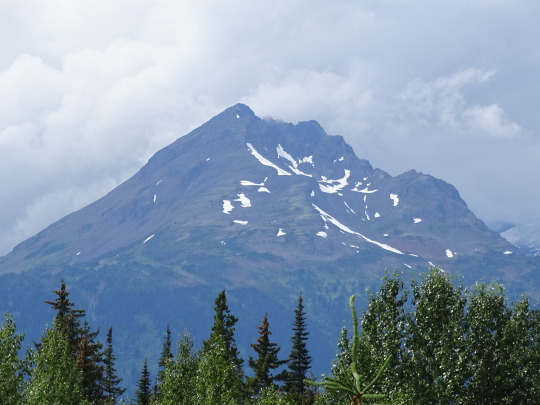
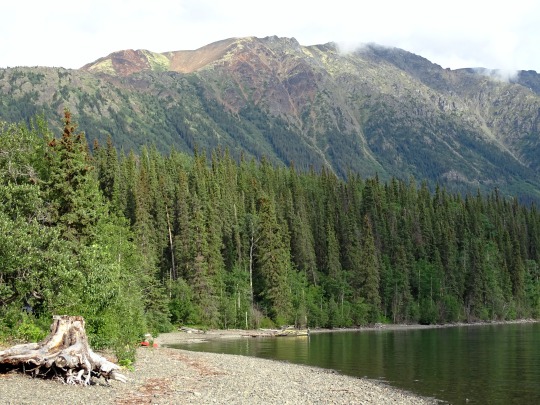
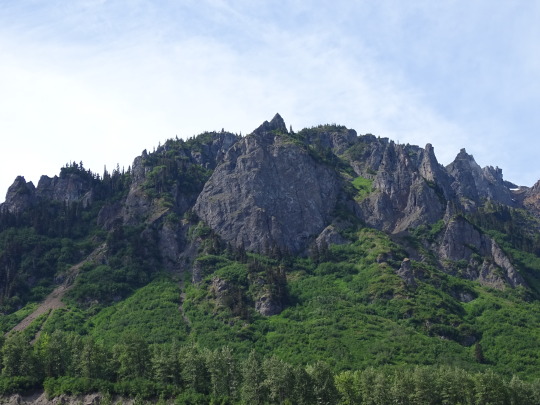
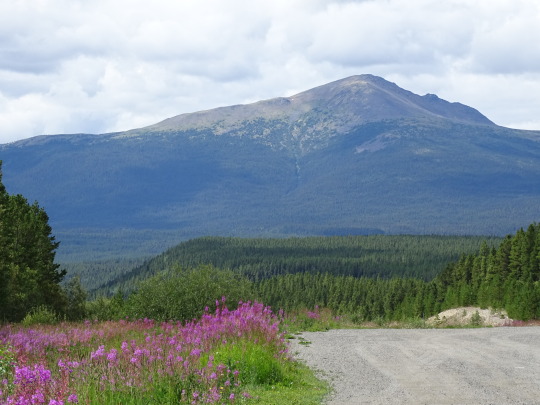
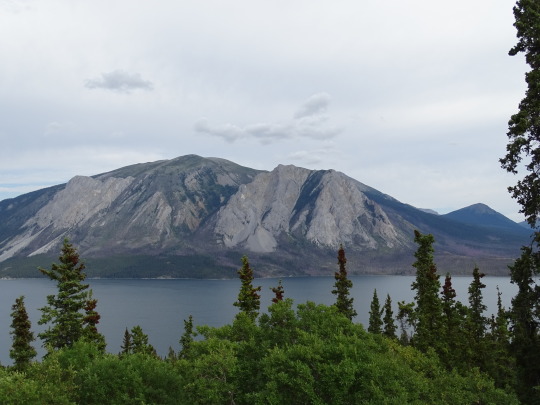



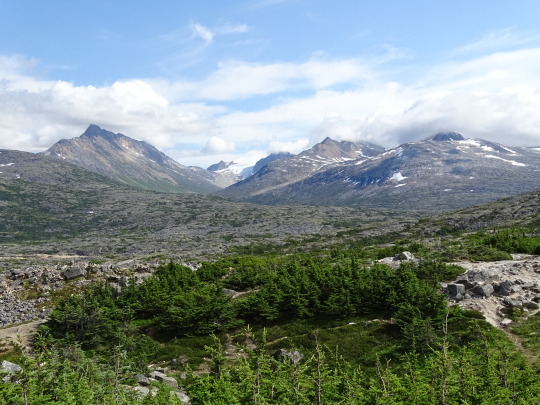
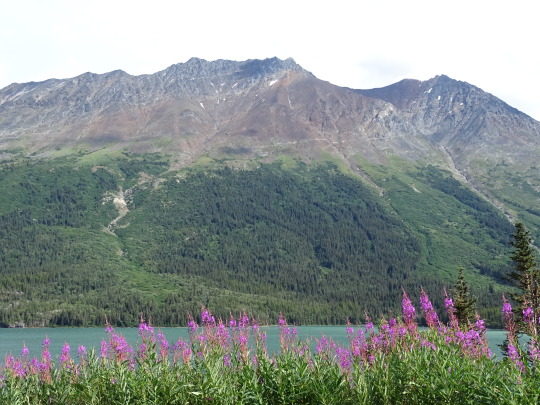

International Mountain Day
Towering, majestic, and beautiful. Mountains are some of the most beautiful of nature’s structures, stolid and regal they stand against the sky, of such a size that they can catch entire countrysides in their shadow, and turn back the ravages of storms against their unflinching sides.
Learn about International Mountain Day
A mountain is basically a huge landform that rises above the land that surrounds it in a limit area, typically forming in a peak at the top. Mountains are generally deemed to be steeper than a hill. Mountains are formed by volcanism or tectonic forces. The force can raise the earth’s surface locally. Glaciers, weather conditions, and rivers can slowly erode the mountains. There are a few mountains that have isolated summits. However, most tend to be part of big mountain ranges.
International Mountain Day has been created so that we can embrace the wonder and magic of the mountains around us. There are some truly spectacular mountains all around the world. You may have even had the pleasure of climbing one or several of them. Some of the most famous mountains include the likes of Mount Kilimanjaro, Mount Fuji, and Mount Everest. On this date, we appreciate all of the world’s mountains. It is also a good day to take some time to reflect on those who have lost their lives while attempting to do dangerous mountain climbs and to pay tribute to them.
Mountains are the source of recreation and resource, with snow-covered sides providing ski slopes to enthusiasts, and minerals in abundance to those brave enough to delve into their stony sides.
In certain areas of the world, they are also a source of unique agriculture, providing ample space for the production of those products that grow best on their slopes. Coffee, Cocoa, Herbs, Spices, and the form of handicrafts that spring from the minds of those who live in the unchanging protection of these towering edifices to geology.
International Mountain Day is your opportunity to head out and appreciate these unique landforms, and all they have to offer. There are a number of reasons why International Mountain Day is loved by people all over the world. This includes the fact that mountains are scarce in some areas of the world, which makes them precious to a lot of people. In fact, you can spend hours reading up about different folk tales and legends about different mountains around the world. This is certainly one of the most fascinating and interesting ways to learn more about the world on International Mountain Day. Plus, International Mountain Day gives you the perfect excuse to climb that mountain that you may have always wanted to climb!
History of International Mountain Day
Established in December of 2003, the United Nations General Assembly created this day to help bring awareness to all of the things we rely on mountains for.
Whether it’s all of the glories mentioned above, or how necessary they are for the health and well-being of the flora and fauna that call them their home, International Mountain Day promotes them all.
How to celebrate International Mountain Day
International Mountain Day can be celebrated in a cavalcade of fun and educational ways. Head out to your local mountain to discover all the things it has to offer. Whether it’s a day in the numerous parks and hidden places that can be found in their craggy terrain, or amazing tourist towns like Leavenworth, WA, get on out there and explore.
Hiking enthusiasts will find the many trails and secret places a joy, as well as being able to enjoy the far flung places that so few ever visit. Due to the challenges of developing them, there is almost always an opportunity to enjoy nature in all its glory.
Even better, once you’ve hiked your way into the far reaches of untouched wilderness, you can settle down to camp away from the light pollution and noise of city life.
Or maybe you prefer to drive, the twisting winding roads that navigate the mountainsides have some of the most beautiful country that can be found, near or far. Snugged down between the rising cliff-face and the sheer drop into the valley, the view is simply unmatched, and such a thing can be refreshing to the human soul. International Mountain Day is a call to get out into the wild and see what it has to offer!
You could also take your mountain bike out on this day, rather than going for a climb or a hike. After all, there are lots of different ways that you can enjoy the spectacular sites of the mountains in your area. Taking your bike and exploring them is one way to go about it! However, do make sure you prioritize safety. Always wear a helmet and it is a good idea to give your bike a check over beforehand as well. This is especially the case if you have not used it for quite some time now.
You can also use International Mountain Day to go camping. A weekend camping in the mountains is an incredible experience. Depending on whether your an outdoor person or not, you may want to go for the full camping experience or you may want to choose somewhere that has some facilities on offer. The choice is yours. There is nothing quite like looking at the mountains around you and the stars in the sky. It is an incredible experience, and definitely one of the best ways to spend International Mountain Day. So, grab your other half or your bestie and enjoy a great camping weekend.
Source
#British Columbia#Yukon#Alberta#Jasper National Park#Coast Mountains#Rocky Mountains#Canada#USA#Alaska#California#travel#original photography#vacation#landmark#tourist attraction#landscape#countryside#Mount Shasta#Mt. Bailey#Broken Mountain#Washington#Oregon#Diamond Peak#International Mountain Day#InternationalMountainDay#11 December#summer 2023
3 notes
·
View notes
Text
Exploring Amazing Places in August

August, the zenith of summer, comes with the promise of vibrant experiences and unforgettable journeys. As the sun casts its golden glow across the world, this month offers plenty of possibilities for travel enthusiasts to embark on exciting escapades. Whether you're a beach lover seeking peaceful shores, a culture enthusiast ready to immerse yourself in festivals, or an adventurer eager to conquer new landscapes, August presents a variety of top travel destinations that cater to every wanderer's heart.
August also starts see smaller crowds as school starts in many places. This makes August ideal for couples to travel and explore.
Join us on this extended journey as we explore in-depth some of the most captivating places to visit in this splendid month.
Discovering the Mediterranean Wonders: A Blend of Colors and Cultures
As summer's warmth envelops the European continent, the Mediterranean shoreline becomes a melting pot of cultures and breathtaking vistas. Imagine wandering through the cobbled streets of Rome, where every corner reveals layers of history waiting to be uncovered. Journey to Florence and be captivated by the Renaissance masterpieces that adorn its galleries and piazzas. The Amalfi Coast beckons with its postcard-perfect scenery, inviting you to unwind on its picturesque beaches. If cooler places are your preference, venture to Iceland and be mesmerised by its otherworldly landscapes, from geothermal wonders to glaciers that glisten under the midnight sun. Alternatively, lose yourself in the rugged beauty of Norway's fjords, where nature's magnificence reigns supreme. Scotland's Edinburgh Festival Fringe is proof of human creativity, offering an array of artistic expressions that transform the city into a vibrant canvas of imagination.
Nature's Playground: Exploring National Parks and the Great Outdoors
August unfolds as a paradise for nature enthusiasts, inviting you to indulge in the raw beauty of national parks and pristine landscapes. Yellowstone National Park's geothermal wonders and geysers present a mesmerizing spectacle, while its diverse wildlife roams freely across the expansive wilderness. Canada's Banff National Park boasts emerald lakes that mirror the surrounding mountains, providing an idyllic setting for hiking and reflection. In the heart of South Africa, Kruger National Park's dry season offers an unparalleled opportunity to witness the intricate dance of life as animals gather around water sources in search of sustenance.
Relaxing by the Sea
Enjoying Nature's Beauty August invites beach lovers to embrace the soothing rhythm of the tides and the caress of ocean breezes. The Maldives, a tropical paradise, unveils its luxurious overwater bungalows and coral reefs teeming with marine life. French Polynesia's Bora Bora, a synonym for romance, presents crystal-clear lagoons and the gentle sway of palm trees, creating a picture-perfect setting for relaxation.
Also, do not forget about lakes. In many places, a lake vacation is incredible.
Festivals and Cultural Delights: Celebrating Together
August is a testament to cultural unity, with festivals celebrating the rich tapestry of human traditions. Spain's La Tomatina Festival in Buñol is a spirited event that sees participants engage in a playful tomato fight, creating a vibrant spectacle of color and camaraderie. The Hajj pilgrimage in Saudi Arabia holds deep spiritual significance for Muslims worldwide, drawing millions to Mecca in a profound journey of faith and devotion. Also in Scotland, the Edinburgh Festival Fringe transforms the Scottish capital into a hub of artistic innovation, where performers from across the globe converge to showcase their talents in a melting pot of creativity.
Asian Adventures: Unveiling the Beauty of the East
The enchantment of Asia beckons, offering a harmonious blend of tradition and modernity. Bali, Indonesia, is a haven of tranquillity, where emerald rice terraces cascade down hillsides and intricate temples invite moments of reflection. Tokyo, Japan, is a symphony of contrasts during the Obon Festival, with lantern-lit streets and traditional dance paying homage to ancestral spirits. Seoul, South Korea, seamlessly fuses ancient palaces with bustling urban districts, encapsulating the nation's dynamic spirit and rich history.
Thrills and Chills: Embracing Adventure
For adventure seekers, August offers opportunities to push boundaries and immerse in nature's wonders. Costa Rica's lush rainforests provide a playground for ziplining through the canopy and encountering exotic creatures, while the Southern Alps of New Zealand transform into a snow-covered wonderland, offering thrilling skiing and snowboarding experiences amidst breathtaking alpine landscapes.
Sailing into the Horizon: Cruising in August
Though Kati and I are not cruisers, we know many that are. August is an opportune time for cruise enthusiasts to set sail on unforgettable journeys. Alaska's majestic glaciers and untamed landscapes create a stunning backdrop for your voyage, as you navigate through icy waters and encounter wildlife in its natural habitat. A Mediterranean cruise presents a cultural odyssey, with each port of call revealing the layers of history, art, and culinary delights that define the region.
Spiritual Retreats and Inner Journeys: Nurturing the Soul
In August, seekers of spiritual enlightenment can embark on transformative journeys. India, with its rich tapestry of spiritual traditions, offers opportunities for meditation and self-discovery. Varanasi, the spiritual heart of the country, immerses visitors in ancient rituals along the sacred Ganges River. Alternatively, the tranquil landscapes of Tibet invite introspection and connection with the divine. Whether it's a pilgrimage to a holy site or a retreat in a serene monastery, August offers a chance to nourish the soul and embark on an inner quest for meaning.
Our Last Word
August paints a vivid tapestry of exploration, inviting travelers to indulge their wanderlust and create cherished memories. Whether you're lounging on Mediterranean shores, partaking in cultural festivities, or embracing the thrill of outdoor adventures, these top travel destinations promise an unparalleled experience. As you plan your August escapade, remember to consider local guidelines and travel advisories to ensure a safe and seamless journey. Let curiosity be your compass as you traverse continents and unlock the hidden treasures that await.
You might just see Kati and I on your adventures.
Related Posts
Read the full article
2 notes
·
View notes
Text
Days 23-25: Grand Teton National Park ⛰️💕

Day 23 - Saturday, September 24 - Bradley & Taggart Lakes Hike, camping at Jenny Lake
I woke up with the sun on Saturday filled with anticipation for my first day in Grand Teton National Park. After the prior afternoon admiring the striking mountains from afar, I was eager for a closer look, and to learn more about the geology and the history of the area.
My first stop was at one of the park’s primary visitor centers, where I was able to get much of the information I was looking for.

I learned that the Teton Range is the youngest mountain range in the Rocky Mountains, formed by many earthquakes along the Teton fault and a combination of volcanic activity, oceanic reefs and receding tides, and glacial movement. The evidence of people populating the area dates back ~11,000 years to the recession of glaciers at the end of the ice age.
When Europeans arrived the tribes included Shoshone, Bannock. Blackfoot, Crow, Flathead, Gros Ventre, and Nez Perce. In addition to being an important source of food and materials, the mountains were of great spiritual significance to the American Indians, who the US government pushed off of their traditional lands. Another reminder of the painful history that put me in a position enjoy this majestic place.

I also spoke with a very nice park ranger who helped me plan my hikes and also practice using my bear spray (with an empty can of course!). Grand Teton, Yellowstone and Glacier National Parks are home to grizzlies as well as black bears. (By the way, if you don’t already carry bear spray in bear country I highly encourage you to do so! Not only will it help you feel more adventurous and secure going deeper into nature, but it also is 90% effective at deterring an attack and can save your life and the life of the bear.)
After the visitor center (which had a beautiful view behind it, pictured above)I headed out for my first hike, a 6 mile loop around Bradley and Taggart Lakes. Wind was minimal on the lakes and the lighting was just right create a glassy surface for perfect reflections.


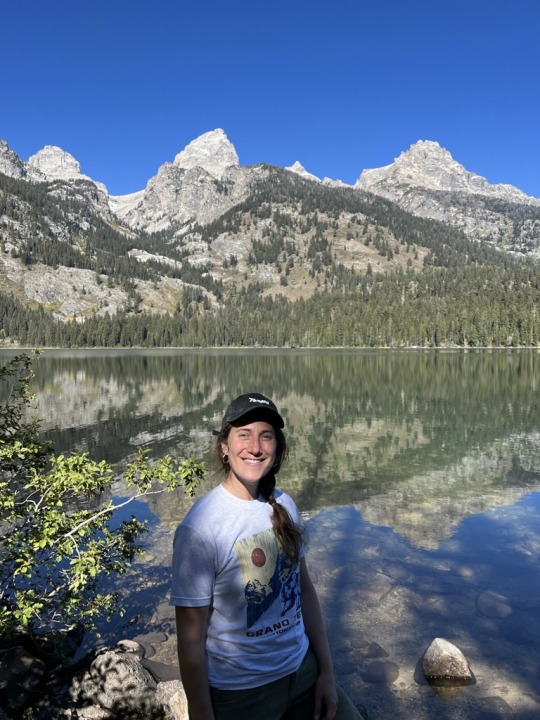

Upon the completion of my hike, I headed further north towards Jenny Lake, where I had reserved a campsite on the last night this very popular campground was open for the season. Many of the national parks book up far in advance for the more peak seasons, so I had to be diligent about checking for cancellations - and fortunately luck was on my side. My campsite was pretty private given its great proximity to the bathrooms and its amazing location within a quick 3 minute walk to a peaceful lakeshore spot.
After setting up camp, I headed down to the rocky lakeshore to practice yoga and meditate on a fairly flat rock. I found so much inner peace stretching, sitting, and breathing to the sound of the crystal blue lake lapping the rocks beneath a setting sun. Even after having spent many more weeks on the road, this moment on Jenny Lake ranks as one of the main highlights of my trip to date. (Play the video below with sound on for the full effect!)
Knowing that I would need to pack up my campsite before departing for a very big hike the following day, I made dinner and turned in early to get a good night’s rest. I also set up a new set of LED string lights that made my campsite feel so much more homey (and easier to find in the dark!).
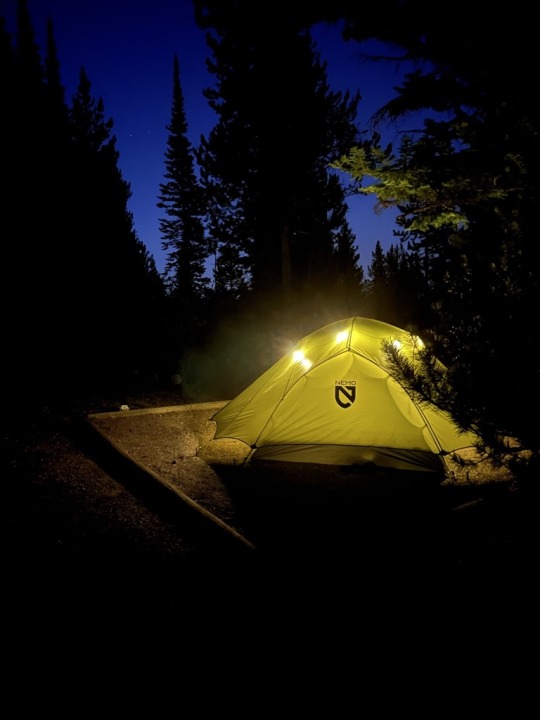
Day 24 - Sunday, September 25 - Hiking to Lake Solitude, camping at Signal Mountain
I woke up just in time to scurry over to my meditation spot on Jenny Lake and witness the spectacular pink colored mountains as the sun rose.
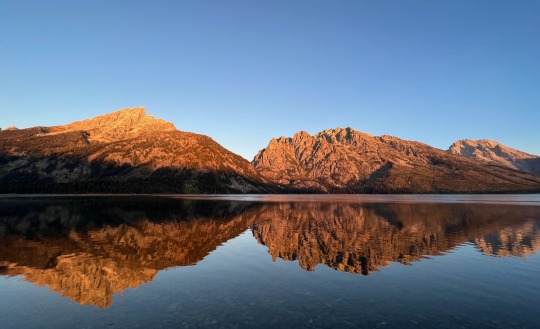
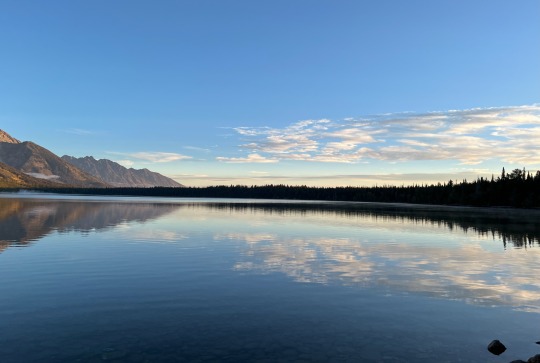
It was hard to say goodbye to my special spot, but I had a big day ahead, so I packed up my campsite and waited in line for the first shuttle boat across Jenny Lake (there was a rainbow in the wake!) to start my journey into Cascade Canyon, a 10 mi hike, with the option to add an additional 6 miles to glacial Lake Solitude.

Fairly early on in the hike, as I turned a corner near entering the canyon, I heard a rustling in the bushes. My heart beating more quickly, I stopped in my tracks, and then heard what I thought for sure would be the first bear I met in the park, say “I’m not a bear!” - I replied, now laughing, “or you’re a lying talking bear!”
It turned out that this not-a-bear was a human from Nebraska named Andrew, who became my hiking buddy for the day and my inspiration to trek all the way to Lake Solitude!

I am so glad that Andrew and I met for so many reasons — we were both nomadic adventurers who share similar passions for personal growth, spiritual exploration, human connection and nature (Andrew, if you are reading this, you are so awesome!).
And if we hadn’t met, I almost certainly wouldn’t have had the motivation to complete the trek to Solitude, a route that turned out to deliver absolutely breathtaking views along the way and a destination well worth the effort. I only wish we had had more time at the lake, as it was such an incredibly beautiful spot to rest and meditate, and it was warm enough outside to swim (unfortunately I didn’t come prepared for that!).
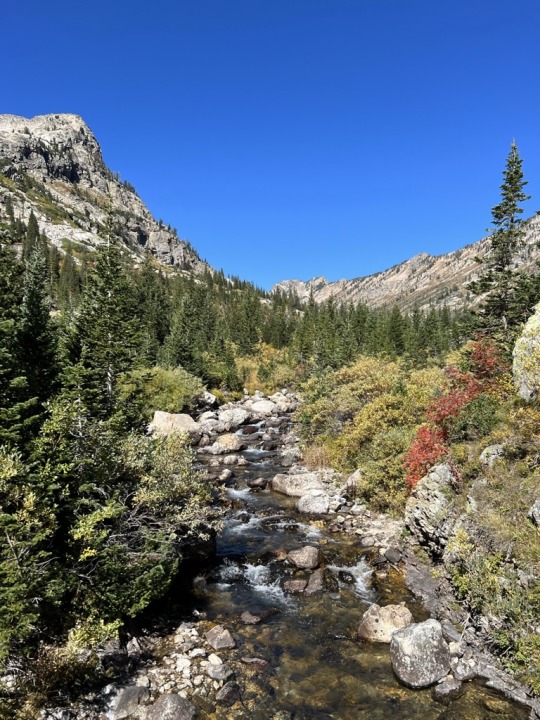


It was very helpful to have a friend who enjoyed deep conversation to share this hike with, as it was surely challenging and very long - I clocked 16+ miles in the end (and Andrew gets extra credit because he didn’t take the boat shuttle in the morning so he did the full 19 miles!). After meeting a very cute Pika on the way down (finally! I saw one! and boy was it cute!), we made it back to the parking lot and said goodbye as the sun set and light was fading.
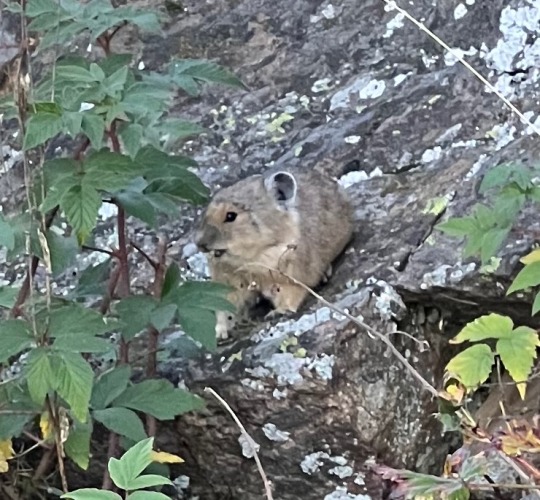


This would be my first evening setting up camp in the dark! Fortunately I have multiple lights (an inflatable solar powered lamp, very handy, as well as a headlamp, my string lights, and a fan that doubles as a light as well) and setting up / taking down camp had become second nature to me at that point, so it was an easy process. Needless to say after 16 miles of hiking, I was very ready for a good night’s sleep!
Day 25 - Monday, September 26 - Easy exploring in Grand Teton, arriving in Yellowstone and visiting West Thumb Geyser Basin
After the huge hike to Lake Solitude I was ready for a more restful day. In the morning I made coffee and breakfast and watched the sun rise over Jackson Lake by my campground. It was another dazzling vista, with the intrigue of cloud cover coming and going over the course of the hour or so I was sitting there.

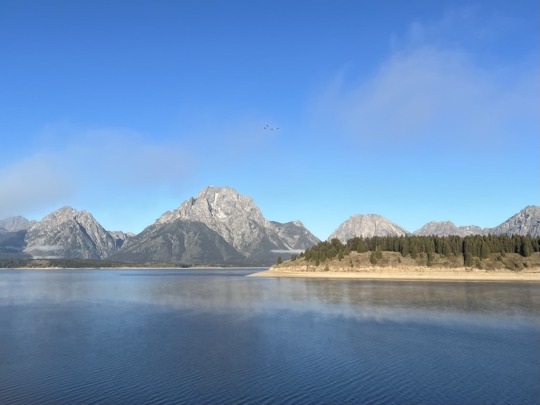
But it was also a view colored by the realities of a warming world and the drought-stricken west: Jackson Lake is a reservoir feeding irrigation for neighboring agricultural region in Idaho, and while it’s normal for water levels to lower over the course of the summer, the past few years of extremely dry weather have led to significant draining of the lake.
By mid morning I was ready to pack up camp and continue exploring the more northern parts of Grand Teton while I made my way towards the border of neighboring Yellowstone. I found many peaceful spots to sit and explore new perspectives — the banks of the snake river at Oxbow Bend, and the meadows of Willow Flats were two particular highlights of the day. At Oxbow Bend I saw two bald eagles, and in the Willow Flats I tried shifting my perspective by laying on the ground to take a plants-eye-view of the Tetons!
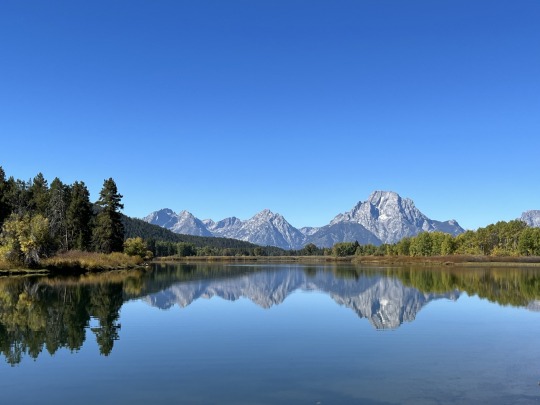
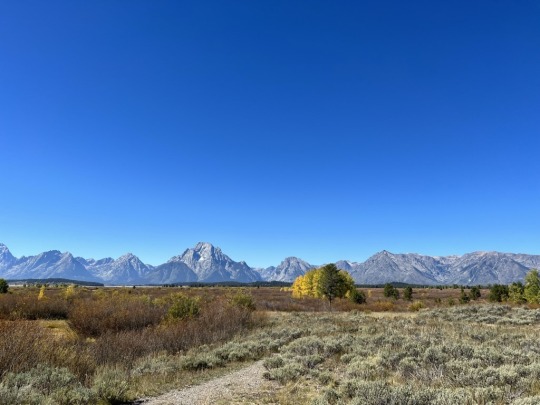
Upon entering Yellowstone, I stopped by my campground at Lewis Lake to set up and get some recommendations from the campground ranger. Turned out that I had enough remaining daylight to check out West Thumb, my first geyser basin.

I arrived just as the sun was setting, and my breath was truly taken away. I really had no idea what to expect from Yellowstone, which I subsequently learned much more about. Yellowstone is a Caldera, a concave plateau located atop a super volcano capable of massive eruptions, one of a small number globally. The only volcanic site I had ever seen was a mudpot area in Lassen Volcanic National Park, which is a mini representation of what you’ll find in the mesmerizing Yellowstone.
The glow of the setting sun made my time in West Thumb truly magical. I took my time meandering along the wooden boardwalk from fountaining geysers, to colorful hot springs, to steaming fumaroles, to bubbling paint pots.





I left West Thumb bubbling like a geyser with excitement to wake up early the next morning and explore more of Yellowstone, the first national park, home of thousands of bison, bears, wolves and many other animals and plants, a truly unique national treasure 🥹 ♨️ 🦬 💕
1 note
·
View note
Text
Seward Deluxe Tour: A Comprehensive 5-Hour Adventure
Seward City Tours invites you on a captivating 5-hour journey that encapsulates the essence of Seward's rich history and breathtaking landscapes. Our Seward Deluxe Tour is thoughtfully curated to ensure you make the most of your day, offering a seamless blend of discovery and relaxation.
Experience the Best: Begin your adventure with the Historical City Tour, a narrated exploration that unveils the captivating tales and landmarks of Seward. Immerse yourself in the town's intriguing past as you stroll through its historic streets.
Culinary Delights: Savor the flavors of Seward with a delectable lunch at a local favorite restaurant, a perfect interlude to your day of exploration. Indulge in regional cuisine that reflects the vibrant culture of this coastal gem.
Marine Wonders: The tour includes admission to the renowned Alaska SeaLife Center, where you'll encounter marine life in its natural splendor. Witness the wonders of the deep and gain insight into the unique ecosystems that thrive in Alaskan waters.
Glacial Majesty: No visit to Seward is complete without a stop at Exit Glacier and the Kenai Fjords National Park. Marvel at the icy grandeur of Exit Glacier and absorb the awe-inspiring beauty of the Kenai Fjords, a testament to nature's majestic artistry.
Practical Information: Departing daily from the Train Depot at 11:30 am, the Seward Deluxe Tour is designed to complement the Coastal Classic's arrival and departure times, ensuring a seamless and memorable experience.
Embark on the Seward Deluxe Tour for a day filled with history, culinary delights, and the unparalleled beauty of Alaskan landscapes. Book your adventure today and make the most of your time in Seward!
0 notes
Text
Exploring Nature's Serenity: The 10 Best Campsites for Paddle Boarding
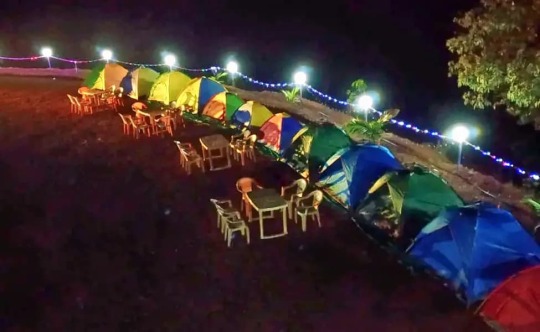
Paddle boarding enthusiasts seek the perfect blend of adventure and relaxation, and what better way to achieve it than by camping amidst nature’s beauty? In this article, we’ll take you on a journey to discover the ten best campsites across the world that offer an unforgettable paddle boarding experience.
Lake Tahoe, California : Nestled in the Sierra Nevada mountains, Lake Tahoe offers pristine waters and breathtaking scenery. Campers can paddle along the crystal-clear lake, surrounded by snow-capped peaks. Popular campgrounds like Emerald Bay State Park make this a haven for paddle boarders.
Everglades National Park, Florida : For a unique paddle boarding adventure, head to the Everglades. Explore the lush, wild mangroves and waterways while camping at Long Pine Key Campground. Encounter exotic wildlife like manatees and alligators while gliding through tranquil waters.
Lake Powell, Arizona/Utah : Lake Powell’s surreal red rock formations and deep blue waters create a surreal paddle boarding experience. Camp at Lone Rock Beach Campground, where you can paddle through narrow canyons and explore hidden coves.
Isle Royale National Park, Michigan : This remote island in Lake Superior is a paradise for nature lovers. Campers can access pristine waters, ideal for paddle boarding, from campgrounds like Rock Harbor. Encounter moose, wolves, and beavers as you explore the park’s rugged coastline.
Acadia National Park, Maine : Acadia’s rugged coastline and clear waters offer an unforgettable paddle boarding experience. Camp at Blackwoods Campground and explore the dramatic cliffs, islands, and inlets while keeping an eye out for seals and eagles.
Lake Placid, New York : Surrounded by the Adirondack Mountains, Lake Placid is a serene spot for paddle boarding. Camp at the Lake Placid/Whiteface Mountain KOA and paddle on the calm waters, enjoying the reflection of the nearby peaks.
Lake of the Ozarks, Missouri : This man-made reservoir offers endless opportunities for paddle boarding. Camp at Lake of the Ozarks State Park and explore secluded coves, limestone bluffs, and vibrant foliage during autumn.
Apostle Islands National Lakeshore, Wisconsin : This national lakeshore is a paddler’s paradise. Camp at Little Sand Bay Campground and paddle among the iconic sea caves and pristine islands, making sure to witness the mesmerizing sea caves at Meyers Beach.
Torch Lake, Michigan : Known for its clear, turquoise waters, Torch Lake is a hidden gem in the Midwest. Camp at Torch Grove Campground and paddle on one of the clearest lakes in the world, surrounded by lush forests.
Glacier National Park, Montana : Camping at Many Glacier Campground in Glacier National Park allows you to paddle on pristine alpine lakes surrounded by towering peaks and glaciers. Enjoy the tranquil ambiance and abundant wildlife while paddle boarding.
These ten campsites offer a diverse range of paddle boarding experiences, from tranquil lakes to rugged coastlines. Whether you seek serenity or adventure, these destinations provide the perfect backdrop for your paddle boarding escapades. Embrace the beauty of nature and create unforgettable memories at these best campsites for paddle boarding.
0 notes
Text
Solitude and Serenity: Best Solo Travel Destinations for Peaceful Getaways
Introduction
Traveling alone can be a deeply enriching experience, offering the opportunity for introspection, self-discovery, and a sense of freedom that is truly unparalleled. While bustling tourist destinations have their allure, there are hidden havens around the world that provide solace and serenity for solo travelers seeking a peaceful getaway. In this article, we'll explore some of the best solo travel destinations that offer solitude and serenity, allowing you to recharge and connect with yourself and the world around you.
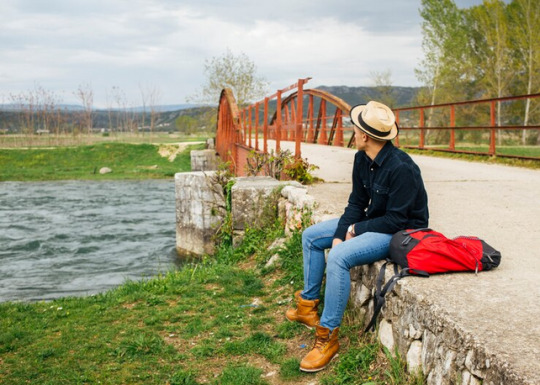
Santorini, Greece: Timeless Beauty and Tranquility
Santorini, with its iconic blue-domed churches and breathtaking sunsets, is a renowned destination for romantic getaways. However, it also offers a serene atmosphere that solo travelers can relish. The charming villages of Oia and Fira, perched atop volcanic cliffs, provide a tranquil escape. You can explore winding cobblestone streets, relax at cozy cafes, and savor local cuisine while taking in stunning views of the Aegean Sea. The calm, azure waters surrounding Santorini are perfect for swimming, snorkeling, or simply basking in the sun's warmth.
Kyoto, Japan: Spiritual Retreat Amidst Tradition
Kyoto, Japan's cultural and spiritual heart, beckons solo travelers with its serene temples, traditional tea houses, and tranquil gardens. It's a city where the past gracefully coexists with the present. You can immerse yourself in the Zen-like atmosphere of places like the Ryoan-ji Temple, famous for its stone garden, or the Fushimi Inari Shrine, known for its thousands of vermilion torii gates. Exploring Kyoto's historic streets, you'll find moments of peaceful reflection amidst the rich tapestry of Japanese tradition.
Banff National Park, Canada: Nature's Solitude
For solo travelers seeking solitude in the embrace of nature, Banff National Park in the Canadian Rockies offers an ideal sanctuary. With its pristine lakes, rugged mountain landscapes, and abundant wildlife, this UNESCO World Heritage site is a haven for hikers, photographers, and those in search of quietude. You can embark on scenic hikes like the Johnston Canyon Trail or kayak on the serene Moraine Lake, surrounded by towering peaks. The park's breathtaking vistas and fresh mountain air provide an escape from the bustle of everyday life.
Iceland: Land of Fire and Ice
Iceland's dramatic landscapes, including volcanoes, glaciers, geysers, and hot springs, make it a captivating destination for solo travelers seeking both adventure and tranquility. The Blue Lagoon, a geothermal spa, offers a unique opportunity to relax in mineral-rich, milky-blue waters amid a stunning lava field. You can also embark on road trips along the famous Ring Road, stopping at remote waterfalls, geothermal areas, and black sand beaches. Iceland's rugged beauty and sparse population provide ample opportunities for introspection and solitude.
Bali, Indonesia: Spiritual Bliss and Tropical Beauty
Bali, known as the "Island of the Gods," offers a harmonious blend of spiritual serenity and tropical paradise. Solo travelers can explore the island's lush rice terraces, vibrant temples, and pristine beaches. The town of Ubud, with its tranquil atmosphere and rich cultural heritage, is an ideal base for introspection and relaxation. You can partake in yoga and meditation retreats, visit sacred temples like Uluwatu, or simply unwind on the golden shores of Nusa Dua. Bali's warm hospitality and natural beauty create a peaceful haven for those traveling alone.
New Zealand: Nature's Playground
New Zealand, with its diverse landscapes, offers solo travelers a playground of natural beauty and solitude. The South Island, in particular, boasts pristine fjords, rugged coastlines, and stunning alpine scenery. Milford Sound, with its towering cliffs and cascading waterfalls, is a must-visit destination. Hiking the Routeburn Track or the Abel Tasman Coastal Track allows you to immerse yourself in the tranquility of the wilderness. New Zealand's untouched wilderness is a perfect canvas for solo adventures and self-discovery.
Bhutan: Tranquility in the Himalayas
Bhutan, nestled in the Eastern Himalayas, is a destination that prioritizes Gross National Happiness over economic development. This commitment to well-being results in a peaceful and harmonious atmosphere that solo travelers can relish. The country's stunning landscapes, including lush valleys and pristine forests, provide a serene backdrop for self-reflection. Bhutan's ancient monasteries, like the Taktsang (Tiger's Nest) Monastery, offer a unique spiritual experience. As a solo traveler, you can immerse yourself in Bhutan's serene culture and natural beauty.
Conclusion:
Solo travel offers a unique opportunity for introspection, self-discovery, and peaceful exploration of the world. These solo travel destinations, from the timeless beauty of Santorini to the tranquil temples of Kyoto, the pristine wilderness of Banff National Park to the dramatic landscapes of Iceland, and the spiritual bliss of Bali to the untouched serenity of Bhutan, each provide a different flavor of solitude and serenity.
Whether you seek solace in nature's embrace, the tranquility of ancient temples, or the simple pleasure of sitting by the sea, these destinations offer a chance to reconnect with yourself and the world around you. So, when you plan your next solo adventure, consider venturing to one of these peaceful getaways, and let the serenity of these hidden gems enrich your solo travel experience.
0 notes
Text
Witness the Enchanting Nature Beauty of Himachal Pradesh
Nestled in the heart of the Himalayas,Nature Beauty of Himachal Pradesh is a treasure trove of natural beauty that never fails to mesmerize travelers. This enchanting region boasts a diverse landscape that ranges from lush green valleys to snow-capped peaks, making it a haven for nature lovers. The verdant forests of Himachal Pradesh are teeming with wildlife, and you can often spot graceful deer, elusive leopards, and a variety of bird species as you explore its national parks and wildlife sanctuaries. Nature Beauty of Himachal Pradesh is a crystal-clear waters reflecting the surrounding mountains like mirrors. One of the most iconic natural wonders of Himachal Pradesh is the Rohtang Pass, where you can witness breathtaking vistas of snow-covered mountains and glaciers. The Beas River meanders through the region, offering opportunities for rafting and adding to the overall picturesque scenery. During the summer months, the apple orchards are in full bloom, painting the landscape with a riot of colors. In contrast, winter brings a blanket of snow, turning Himachal into a winter wonderland perfect for skiing and snowboarding. The charm of Himachal Pradesh lies in its ability to transport you to a world of pure, unspoiled natural beauty. Whether you're trekking through its lush forests, gazing at the starry skies, or simply sipping on a hot cup of tea while overlooking the majestic mountains, Himachal Pradesh's nature beauty promises an unforgettable experience. So, pack your bags and immerse yourself in the serenity of this Himalayan paradise.
#HimachalBeauty#NatureLoversParadise#ScenicHimachal#NaturalWonders#HimalayanEscape#ExploreNature#HimachalLandscapes#SereneGetaways
0 notes
Text
Trekking Through Nepal's Hidden Gem: The Langtang Valley Trek
Nepal, a land of rugged mountains, serene landscapes, and rich cultural heritage, is a paradise for trekkers from around the world. While the Everest and Annapurna regions often steal the limelight, there's another trekking destination that deserves your attention: the Langtang Valley Trek. This lesser-known gem offers a unique blend of natural beauty, cultural richness, and adventure that is sure to captivate your heart and soul.

The Langtang Valley: A Brief Introduction
Nestled in the northern part of Nepal, the Langtang Valley is a narrow gorge that runs parallel to the Tibetan border. The region is part of the Langtang National Park, which spans over 1,700 square kilometers and boasts breathtaking landscapes, diverse flora and fauna, and a rich cultural tapestry.
The Trekking Experience
The Langtang Valley Trek typically begins in the village of Syabrubesi, accessible by a scenic drive from Kathmandu. From here, trekkers embark on a journey that takes them through lush forests, picturesque villages, and rugged terrains. The trail meanders alongside the Langtang River, which originates from the Langtang Lirung Glacier.
The trek offers a range of trekking experiences suitable for all levels of hikers, from beginners to seasoned adventurers. You can choose from shorter treks lasting around 7 to 10 days or opt for a more extended trek that takes you deeper into the valley and beyond.
Spectacular Scenery
One of the biggest draws of the Langtang Valley Trek is its stunning scenery. The valley is flanked by towering peaks, including Langtang Lirung (7,227 meters) and Ganesh Himal (7,600 meters), providing a dramatic backdrop to your journey. As you ascend through the valley, you'll encounter dense rhododendron and bamboo forests, alpine meadows, and pristine glacial lakes, each more awe-inspiring than the last.
One of the highlights of the trek is the viewpoint at Kyanjin Gompa. From here, you'll have panoramic views of the Langtang Lirung and surrounding peaks. The serene glacial lake of Kyanjin Gompa adds to the charm of this place and is a perfect spot to reflect on your journey.
Cultural Encounters
Beyond the natural beauty, the Langtang Valley is also known for its warm and welcoming inhabitants. The region is primarily inhabited by Tamang and Tibetan communities, and trekking through their villages provides an opportunity to experience their unique culture and way of life.
Make sure to visit the Kyanjin Gompa, an ancient Buddhist monastery that holds spiritual significance for the locals. You can also engage with the residents, try local dishes, and learn about their customs and traditions, making your trek not just an outdoor adventure but a cultural exchange as well.
Wildlife and Biodiversity
The Langtang National Park is home to a diverse range of wildlife, including the elusive red panda, Himalayan tahr, snow leopard, and various species of birds. While sightings of these creatures are relatively rare, the park's pristine forests and remote location make it an ideal habitat for these species. Keep your camera ready, and you might get lucky.
When to Trek
The best time to embark on the Langtang Valley Trek is during the spring (March to May) and autumn (September to November) seasons. During these months, the weather is generally clear and stable, offering the best visibility of the stunning mountain vistas and comfortable trekking conditions.
Trekking Essentials
Before setting out on the Langtang Valley Trek, make sure you are adequately prepared. Here are some essentials to consider:
Permits: You'll need a Langtang National Park entry permit and a TIMS (Trekkers' Information Management System) card, which you can obtain in Kathmandu or at the park's entrance in Dhunche.
Gear: Dress in layers to accommodate changing weather conditions. Sturdy hiking boots, a warm sleeping bag, and a good-quality backpack are essential. Don't forget essentials like a trekking pole, sunscreen, and a first-aid kit.
Guides and Porters: While it's possible to trek the Langtang Valley independently, hiring a local guide and porter can enhance your experience and provide employment opportunities to the local community.
Fitness Level: Be prepared for uphill and downhill trekking, so a good level of physical fitness is advisable.
Conclusion
The Langtang Valley Trek is a hidden gem in Nepal, offering a unique blend of natural beauty, cultural richness, and adventure. From the stunning mountain vistas to the warm hospitality of the local communities, this trek promises an unforgettable journey through one of the world's most beautiful regions. Whether you're an experienced trekker or a novice looking for an adventure of a lifetime, the Langtang Valley Trek has something for everyone. So, pack your bags, lace up your boots, and get ready to explore this extraordinary corner of the Himalayas.
#travel#hiking#trekking in nepal#hikingadventures#annapurnacircuittrek#nepaltrekkingroutes#ebc trek#everest helicopter tour#mount everest#nepal tour package#adventuretour#adventure time#asiatravel#blog
0 notes
Text
3-Day Itinerary of Yosemite National Park, California

Nestled within the Sierra Nevada mountains of California, Yosemite National Park is a natural wonderland that draws visitors from around the globe with its breath-taking landscapes, towering granite cliffs, cascading waterfalls, and diverse ecosystems. A three-day adventure in Yosemite offers a perfect blend of iconic landmarks, outdoor activities, and opportunities to connect with nature. In this meticulously crafted itinerary, we will guide you through a memorable exploration of this stunning national park.
Day 1: Arrival and Valley Floor Exploration
Morning:
Arrive at Yosemite National Park and check into your chosen accommodation within the park or nearby. Start your day with a hearty breakfast to fuel your upcoming adventures.
Late Morning:
Head straight to Yosemite Valley, the heart of the park, where awe-inspiring vistas and iconic landmarks await. Begin your journey at Tunnel View, a famous overlook that offers a breathtaking panoramic view of El Capitan, Half Dome, and Bridalveil Fall. This is an ideal spot for capturing the essence of Yosemite in photographs.
Afternoon:
For a closer look at the park's iconic granite formations, hike the easy loop trail to Mirror Lake. The calm waters of the lake often reflect the surrounding cliffs, creating a picture-perfect scene. Enjoy a leisurely picnic by the lake before continuing your exploration.
Evening:
As the day winds down, head to the Yosemite Valley Visitor Center to learn about the park's natural and cultural history through informative exhibits. Afterward, catch the sunset at Sentinel Bridge, where the setting sun casts a warm glow on Half Dome, making for a truly mesmerizing sight.
Day 2: Waterfalls and High Country Adventures
Morning:
Begin your second day with an early start as you venture to Yosemite Falls, one of the tallest waterfalls in North America. Follow the Yosemite Falls Trail for an up-close experience of the falls' thundering beauty. The trail is divided into two parts: the Lower Yosemite Falls Trail, a short and easy walk suitable for all ages, and the more challenging Upper Yosemite Falls Trail, which rewards hikers with stunning vistas.
Afternoon:
Satisfy your appetite with a packed lunch and then embark on a scenic drive to Glacier Point. From this lofty vantage point, you'll enjoy sweeping views of Yosemite Valley, Half Dome, and the High Sierra peaks. For a more adventurous option, consider hiking the Four-Mile Trail, which leads to Glacier Point and offers a sense of accomplishment alongside stunning scenery.
Evening:
As the sun sets, return to Yosemite Valley and take a leisurely stroll along the Cook's Meadow Loop. This peaceful trail offers magnificent views of Half Dome and the surrounding meadows, making it an ideal place to unwind after an active day.
Day 3: High Sierra Hiking and Departure
Morning:
On your final day, rise early for an unforgettable high country adventure. Drive to Tuolumne Meadows, a subalpine meadowland that offers a striking contrast to the valley's landscapes. Lace up your hiking boots and set out on the Cathedral Lakes Trail. This moderately strenuous hike leads you to pristine alpine lakes and showcases the beauty of Yosemite's rugged backcountry.
Afternoon:
Enjoy a picnic lunch amid the tranquility of the high country before descending back to Tuolumne Meadows. On your return, stop by Olmsted Point for a unique perspective of the granite formations and Tenaya Lake, a serene alpine lake that's perfect for a refreshing swim during the warmer months.
Late Afternoon:
As your Yosemite journey comes to a close, take a moment to reflect on the memories you've created amidst nature's grandeur. Before leaving the park, explore the Tuolumne Grove of Giant Sequoias, home to towering ancient trees that will leave you in awe of their sheer size and beauty.
Evening:
Depart from Yosemite National Park with a heart full of memories and a camera filled with snapshots of the breathtaking landscapes you've witnessed. Whether it's the towering cliffs, cascading waterfalls, or serene meadows, Yosemite's beauty will stay with you long after you've left its hallowed grounds.
In conclusion, a 3 day itinerary in Yosemite National Park is a carefully curated journey through some of the most iconic and awe-inspiring natural landscapes in the world. From the majesty of Yosemite Valley to the tranquility of the high country, this itinerary encapsulates the essence of Yosemite's beauty and offers a perfect balance between adventure and relaxation. So, lace up your hiking boots, pack your camera, and get ready to embark on a remarkable journey through the captivating wonders of Yosemite National Park.
#3-Day Itinerary of Yosemite National Park#Itinerary of Yosemite National Park#Yosemite National Park
1 note
·
View note
Text
Into the Wild - Luxury Excursions for Photographers in Patagonia
Unleash Your Inner Explorer: Introduction
Are you ready to embark on a once-in-a-lifetime adventure? Do you want to explore breathtaking landscapes and capture stunning photographs? Look no further than Patagonia, a region in the southern tip of South America known for its rugged terrain and natural wonders.
In this blog post, we will take you on a journey through Patagonia's most magnificent sights. From glaciers to mountains, lakes to forests, Patagonia has it all. We will also introduce you to luxury excursions designed specifically for photographers who want to capture the beauty of this unique landscape.
Why Patagonia is a Photographer's Dream Destination
Patagonia is a veritable playground for photographers. The region is full of breathtaking landscapes and unique wildlife that will leave you in awe. From the towering peaks of the Andes to the crystal clear lakes, there is no shortage of natural beauty to capture on camera.
One of the most iconic sights in Patagonia is the Perito Moreno Glacier, located in Los Glaciares National Park. The glacier is a stunning 97 square mile ice field that towers over the surrounding landscape. It's a photographer's dream come true, offering endless opportunities for capturing stunning images.
Moreover, Patagonia is a region teeming with unique wildlife. You can find everything from guanacos and pumas to armadillos and foxes. The diversity of the wildlife makes it a fantastic destination for wildlife photographers, who will have a field day capturing images of these incredible animals in their natural habitat.
Overall, Patagonia is a must-visit destination for anyone with a passion for photography and adventure. So, get ready to unleash your inner explorer and discover all that this unique region has to offer.
Patagonia's Most Breathtaking Photography Spots
1. Perito Moreno Glacier
The Perito Moreno Glacier is one of the most unique and awe-inspiring natural wonders in Patagonia. Its striking blue ice walls provide a fantastic backdrop for photographers looking for the perfect shot. The glacier is located in the Los Glaciares National Park, a UNESCO world heritage site.
2. Torres del Paine National Park
Torres del Paine National Park is a photographer's paradise with its towering peaks, pristine lakes, and abundant wildlife. It's the perfect place to capture some of Patagonia's most iconic photographs, including the famous Cuernos del Paine and Torres del Paine mountain peaks.
3. Marble Caves
The Marble Caves, located in the General Carrera Lake, are a hidden gem in Patagonia. These mesmerizing caves provide a unique opportunity for photographers to capture stunning reflections and mesmerizing colors. The best time to visit is during the winter months when the sunlight illuminates the walls.
4. Monte Fitz Roy
Monte Fitz Roy, also known as Cerro Chaltén, is a photographer's dream destination with its jagged peaks and stunning panoramic views. Located in the Los Glaciares National Park, the mountain provides a perfect backdrop for photographing the vivid colors of sunrise and sunset.
5. Tierra del Fuego National Park
Tierra del Fuego National Park is the southernmost national park in the world and a top photography spot in Patagonia. The park offers a diverse landscape with glaciers, forests, and rivers, and is home to a variety of wildlife species, including penguins and seals.
Patagonia is a stunning destination for photographers looking to capture the natural beauty of a unique and untouched wilderness. With its towering peaks, pristine lakes, and abundant wildlife, it's no wonder why Patagonia has become one of the most sought-after destinations for landscape and wildlife photography. Whether you're an experienced photographer or just starting, Patagonia offers plenty of breathtaking photography spots to suit any skill level and interest.
The Best Time to Visit Patagonia for Photographers
Spring - September to November
Spring in Patagonia is a time of renewal and growth. It is a perfect time for photographers to capture the blooming of wildflowers, breathtaking views of snow-capped Andes, and the majestic glaciers. Moreover, the weather is usually mild, and the crowds are thinner than in the tourist season. This season is ideal for photographers who want to capture the beauty of nature and wildlife.
Summer - December to February
Summer in Patagonia is the peak tourist season, and it is the busiest time of year. However, it is the best time to capture the picturesque landscapes in its full glory. The days are longer, and the weather is warm, making it a perfect time for hiking, climbing, and exploring the national parks. Photographers can capture the stunning sunsets and sunrises, abundant wildlife such as penguins, sea lions, and whales.
Fall - March to May
Fall in Patagonia is the shoulder season, and the weather is relatively milder than the peak season. It is an excellent time for photographers to capture the vibrant autumn colors of Patagonia's forests and wildlife during their migration. The accommodations and venues are more peaceful and serene, making it an ideal time for nature enthusiasts to enjoy some solitude.
Winter - June to August
Winter in Patagonia is a magical time, particularly for photographers looking to capture some stunning wintery landscapes. The weather is cold, and the trails are often snow-covered, making it a perfect time to capture the snow-capped peaks, crystal clear lakes, and unique Icefield formations. Photographers can also capture the northern lights, which are visible from certain locations in Patagonia.
In conclusion, Patagonia offers a range of photographic opportunities throughout the year. Each season has its unique beauty and challenges. Depending on your photographic passions and tastes, the time of year you visit this region will vary. But do plan ahead and book an experienced guide to make the most of your time in Patagonia.
Luxury Accommodations for Your Patagonia Escape
Patagonia Camp
Looking for a comfortable retreat without sacrificing the beauty of Patagonia? Patagonia Camp is the perfect place for you! Situated in Torres del Paine National Park, this glamping experience offers comfort and style with their private yurts. Each yurt has its own private bathroom, heating, and a stunning view of the park. Patagonia Camp also offers a variety of activities such as trekking, horseback riding, kayaking, and wildlife watching. After a long day of adventure, enjoy a delicious meal at their on-site restaurant featuring regional dishes.
Tierra Patagonia Hotel & Spa
For those looking for a more traditional luxury experience, Tierra Patagonia Hotel & Spa is the ideal choice. This hotel offers 40 spacious rooms with breathtaking views of the Torres del Paine and Lake Sarmiento. The hotel's architecture is inspired by the natural landscape and is designed to blend seamlessly with its surroundings. Enjoy the hotel's spa, equipped with a heated infinity pool, sauna, steam room, and hot tub, or indulge in their excellent international cuisine.
Explora Patagonia
Explora Patagonia is an all-inclusive luxury hotel that offers a wide range of activities for their guests. Whether it's trekking, horseback riding, or sailing, this hotel offers excursions that cater to all activity levels. Explore the stunning landscape of Torres del Paine National Park with their expert guides. The hotel's rooms feature large windows that offer uninterrupted views of Lake Pehoe and the Paine Massif. Enjoy a gourmet meal at their on-site restaurant, where the menu changes daily and features locally sourced ingredients.
Awasi Patagonia
This exclusive lodge offers nine private villas, each with their own hot tub and view of the forest, lake, or Torres del Paine. Awasi Patagonia offers tailor-made experiences, allowing guests to choose their own activities and itinerary. The hotel's restaurant offers a unique dining experience, where the chef creates a menu inspired by the guest's preferences. Awasi Patagonia also offers a spa, where guests can enjoy a massage or facial after a long day of adventure.
Whatever your luxury accommodation needs, Patagonia offers an abundance of options that will cater to your every need. From glamping to all-inclusive lodges to private villas, there is something for everyone. With breathtaking views and a wide variety of activities, Patagonia is the perfect destination for those seeking adventure and luxury.
1. Camera and Lens
When it comes to photographing Patagonia's vast wilderness, it's important to have the right camera and lens setup. A camera with a full-frame sensor and at least 24 megapixels, paired with a wide-angle lens, is ideal for capturing sweeping landscapes. For wildlife photography, a telephoto lens ranging from 200mm to 600mm is recommended.
2. Tripod
A sturdy tripod is a must-have for landscape and wildlife photography in Patagonia. Look for one made of lightweight carbon fiber with a load capacity of at least 20 pounds. A tripod with adjustable legs and a ball head will make it easier to angle your shots and capture the perfect image.
3. Clothing
Patagonia's weather can be unpredictable, so it's important to have the right clothing for different conditions. Layering is key, so bring a waterproof outer layer, warm insulating layers, and moisture-wicking base layers. Don't forget gloves, a hat, and a neck gaiter for extra protection from the elements.
4. Footwear
Hiking in Patagonia requires durable, waterproof footwear with good traction. Look for boots with a Gore-Tex membrane and ankle support. For stream crossings, wetlands, and muddy trails, water shoes with good grip and quick-drying capabilities are also helpful.
5. Backpack
A comfortable, well-fitted backpack is essential for carrying all your camera gear, clothing, food, and other necessities out in the wilderness. Look for a backpack with adjustable straps and a waist belt for better weight distribution. Waterproofing and durability should also be considered.
6. Portable Charger
In Patagonia, you may not always have access to electricity, so bring a portable charger to keep your camera, phone, and other electronics charged. Look for a charger with a high capacity and multiple charging ports.
Overall, having the right gear and equipment can make a world of difference for capturing stunning images and enjoying a comfortable and safe adventure in Patagonia's wilderness. Don't skimp on quality gear; it can be the difference between a successful photography trip and a frustrating one.
A Guide to Wildlife Photography in Patagonia
Introduction
Patagonia is a wildlife photographer's paradise. The region's unique climatic conditions and diverse landscapes make it home to a vast array of wildlife. From the elusive puma and the endangered huemul deer to the majestic condor, there's no shortage of photographic opportunities. However, capturing stunning images of Patagonia's wildlife requires some preparation and patience.
Timing is Everything
The best time for wildlife photography in Patagonia is during the austral spring and fall. During the spring months of September, October, and November, the weather is mild, and many animals are mating, making them more active. Similarly, during the fall months of March, April, and May, animals are preparing for the winter, making them more active and easier to spot.
Locations
Patagonia boasts several national parks that are ideal for wildlife photography. The Los Huemules Reserve is home to the elusive huemul deer, while the Torres del Paine National Park is famous for its puma sightings. The Monte Leon National Park is an excellent location for birdwatching and spotting the South American sea lion.
Equipment
To capture stunning wildlife photographs in Patagonia, you need the right equipment. A telephoto lens of 300mm or more is necessary to capture animals from a safe distance. A tripod or monopod is essential for stability, especially in windy conditions. A waterproof camera or a rain cover will protect your gear from the unpredictable weather conditions.
Etiquette
Respect the wildlife and their habitat. Keep a safe distance from animals, and do not disturb their natural behavior. Avoid using flash photography near animals as it may startle or blind them. Make sure to follow park rules and regulations, and do not litter.
Patagonia is a wildlife photographer's dream destination. With proper timing, location, equipment, and etiquette, you can capture stunning photographs of the region's diverse wildlife. Remember, wildlife photography is about patience, so take your time, enjoy the scenery, and let the animals come to you. Happy shooting!
Tips for Planning Your Perfect Patagonia Photography Trip
1. Research and Plan
Before embarking on your photography trip to Patagonia, it is essential to do your research and plan well. Research the best time of year to visit, the weather conditions, and the ideal places to photograph. You can also research the type of photography equipment that would be best for the region.
2. Get the Right Gear
When planning your Patagonia photography trip, it is essential to have the right equipment. Pack lightweight and high-quality photography gear, including a camera, lenses, tripod, batteries, and memory cards. Don't forget to pack weatherproof gear as the region's weather can be unpredictable.
3. Hire a Local Guide
Hiring a local guide is crucial for your Patagonia photography trip. They are familiar with the region, know the best spots for photography, and can guide you through the area's challenging terrain. They can also help you navigate any language barriers and provide you with useful tips and information about the region.
4. Stay in Comfortable Accommodations
When choosing accommodation, consider staying in comfortable and convenient places that cater to photographers. Select lodges or hotels that offer easy access to the region's best photography spots. You can also choose to stay in a tented camp for a more immersive experience, but make sure it is equipped with all the necessary amenities.
5. Prepare for the Conditions
Patagonia's weather conditions can be unpredictable, so you should be prepared for any situation. Pack clothes that can be layered, including warm jackets, gloves, hats, and waterproof gear. It is also essential to bring insect repellent, sunscreen, and any necessary medication.
6. Respect and Protect the Environment
When photographing in Patagonia, respect the environment and its inhabitants. Do not disturb the wildlife, avoid littering, and stay on marked trails to minimize your impact on the environment. Also, consider using eco-friendly products that minimize harm to the environment.
7. Have Fun and Be Open to New Experiences
Finally, have fun and be open to new experiences. Patagonia is a vast and beautiful region that offers endless opportunities for photography. Embrace new experiences and be open to different cultures and customs. You never know what incredible photography opportunities may arise from stepping out of your comfort zone.
In conclusion, planning your Patagonia photography trip well can help you make the most of your experience. From research and planning to having the right gear and hiring a local guide, following these tips can help you capture incredible photographs while respecting the environment and having fun.
Read the full article
1 note
·
View note
Photo
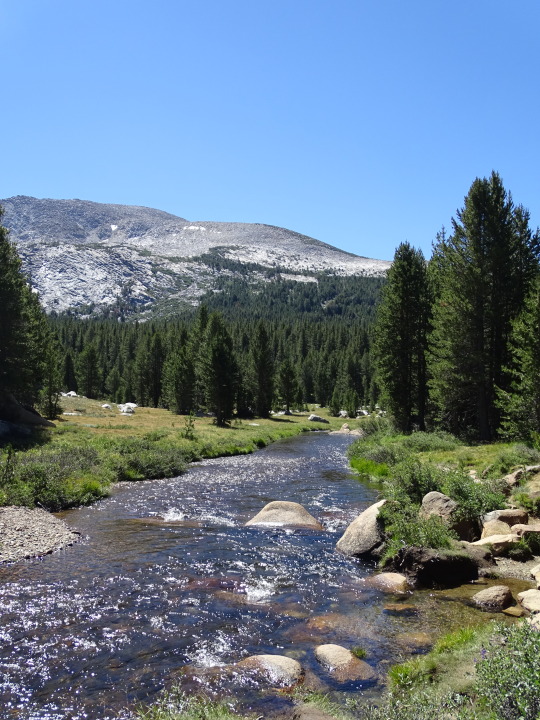


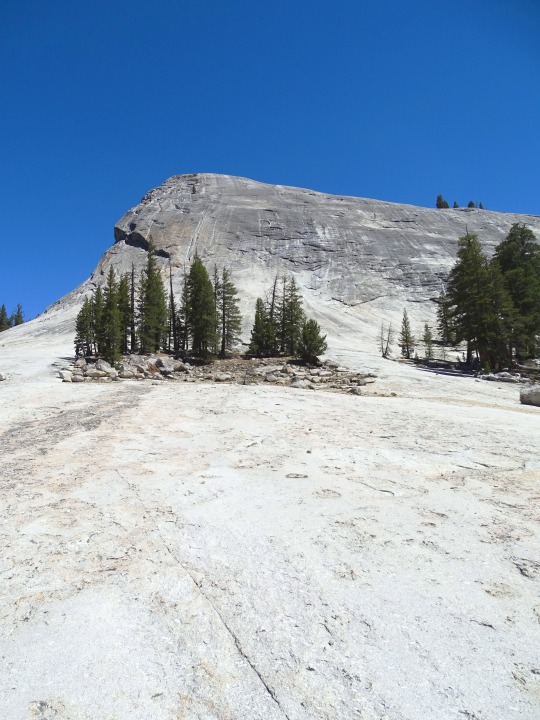

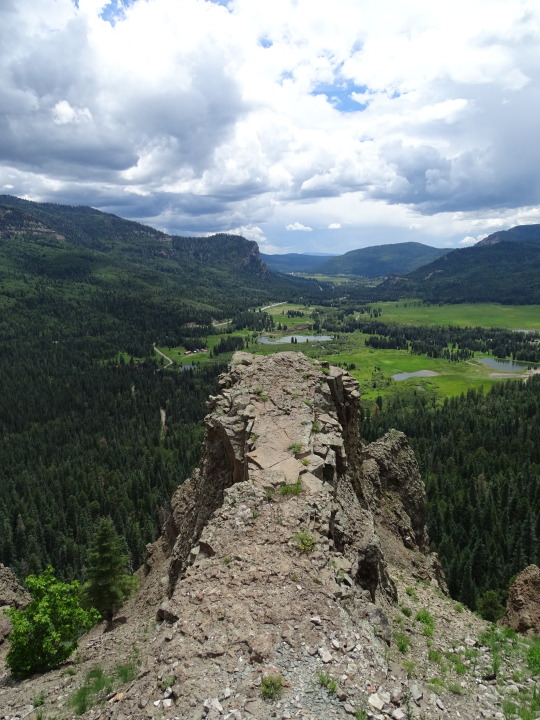


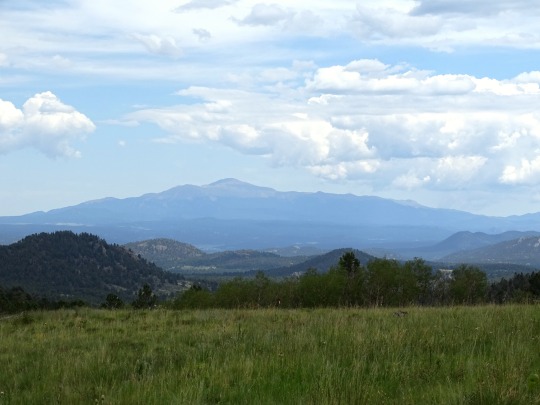

International Mountain Day
Take a scenic hike or drive up a nearby peak, try adventurous sports like mountain biking and skiing or camp out and sleep under the stars.¨
Towering, majestic, and beautiful. Mountains are some of the most beautiful of nature’s structures, stolid and regal they stand against the sky, of such a size that they can catch entire countrysides in their shadow, and turn back the ravages of storms against their unflinching sides.
Learn about International Mountain Day
A mountain is basically a huge landform that rises above the land that surrounds it in a limit area, typically forming in a peak at the top. Mountains are generally deemed to be steeper than a hill. Mountains are formed by volcanism or tectonic forces. The force can raise the earth’s surface locally. Glaciers, weather conditions, and rivers can slowly erode the mountains. There are a few mountains that have isolated summits. However, most tend to be part of big mountain ranges.
International Mountain Day has been created so that we can embrace the wonder and magic of the mountains around us. There are some truly spectacular mountains all around the world. You may have even had the pleasure of climbing one or several of them. Some of the most famous mountains include the likes of Mount Kilimanjaro, Mount Fuji, and Mount Everest. On this date, we appreciate all of the world’s mountains. It is also a good day to take some time to reflect on those who have lost their lives while attempting to do dangerous mountain climbs and to pay tribute to them.
Mountains are the source of recreation and resource, with snow-covered sides providing ski slopes to enthusiasts, and minerals in abundance to those brave enough to delve into their stony sides.
In certain areas of the world, they are also a source of unique agriculture, providing ample space for the production of those products that grow best on their slopes. Coffee, Cocoa, Herbs, Spices, and the form of handicrafts that spring from the minds of those who live in the unchanging protection of these towering edifices to geology.
International Mountain Day is your opportunity to head out and appreciate these unique landforms, and all they have to offer. There are a number of reasons why International Mountain Day is loved by people all over the world. This includes the fact that mountains are scarce in some areas of the world, which makes them precious to a lot of people. In fact, you can spend hours reading up about different folk tales and legends about different mountains around the world. This is certainly one of the most fascinating and interesting ways to learn more about the world on International Mountain Day. Plus, International Mountain Day gives you the perfect excuse to climb that mountain that you may have always wanted to climb!
History of International Mountain Day
Established in December of 2003, the United Nations General Assembly created this day to help bring awareness to all of the things we rely on mountains for.
Whether it’s all of the glories mentioned above, or how necessary they are for the health and well-being of the flora and fauna that call them their home, International Mountain Day promotes them all.
How to celebrate International Mountain Day
International Mountain Day can be celebrated in a cavalcade of fun and educational ways. Head out to your local mountain to discover all the things it has to offer. Whether it’s a day in the numerous parks and hidden places that can be found in their craggy terrain, or amazing tourist towns like Leavenworth, WA, get on out there and explore.
Hiking enthusiasts will find the many trails and secret places a joy, as well as being able to enjoy the far flung places that so few ever visit. Due to the challenges of developing them, there is almost always an opportunity to enjoy nature in all its glory.
Even better, once you’ve hiked your way into the far reaches of untouched wilderness, you can settle down to camp away from the light pollution and noise of city life.
Or maybe you prefer to drive, the twisting winding roads that navigate the mountainsides have some of the most beautiful country that can be found, near or far. Snugged down between the rising cliff-face and the sheer drop into the valley, the view is simply unmatched, and such a thing can be refreshing to the human soul. International Mountain Day is a call to get out into the wild and see what it has to offer!
You could also take your mountain bike out on this day, rather than going for a climb or a hike. After all, there are lots of different ways that you can enjoy the spectacular sites of the mountains in your area. Taking your bike and exploring them is one way to go about it! However, do make sure you prioritize safety. Always wear a helmet and it is a good idea to give your bike a check over beforehand as well. This is especially the case if you have not used it for quite some time now.
You can also use International Mountain Day to go camping. A weekend camping in the mountains is an incredible experience. Depending on whether your an outdoor person or not, you may want to go for the full camping experience or you may want to choose somewhere that has some facilities on offer. The choice is yours. There is nothing quite like looking at the mountains around you and the stars in the sky. It is an incredible experience, and definitely one of the best ways to spend International Mountain Day. So, grab your other half or your bestie and enjoy a great camping weekend.
Source
#Utah#California#Colorado#landscape#countryside#summer 2022#USA#original photography#travel#Sierra Nevada#Rocky Mountains#Split Mountain#Dinosaur National Monument#Mount Sneffels#Sneffels Range#Pikes Peak#San Juan Mountains#Lake Crowley#Mono County#Nevada#Boundary Peak#White Mountains#Lembert Dome#Half Dome#El Capitan#Tenaya Lake#International Mountain Day#11 December#tourist attraction#landmark
2 notes
·
View notes
Text
Everest Base Camp Trek - 14Days | EBC Trekking For 2023/24 - 14 Days
EVEREST BASE CAMP TREK - 14DAYS | EBC TREKKING FOR 2023/24 OVERVIEW
Everest Base Camp Trek - a 14 Days trek is a perfect timeframe to reach the base camp of Mount Everest. Laying at the Solukhumbu district within the Sagarmatha National Park, Everest base camp trek is the most popular trekking amongst trekkers due to the sheer popularity of Mt. Everest.
On your Mount Everest Base Camp Trek, you experience an awe-inspiring view of Mt. Everest from Kala Patthar (black rock) an optimally preferred distance and view the gigantic Everest and relish its empowering glory - quite an extraordinary feeling. The highest elevation you reach on these 14 days is 5545m.
Though Mt. Everest is the most alluring aspect of this trek, nonetheless, other famous peaks like Mt. Ama Dablam, Mt. Lhotse, Mt. Nuptse, Mt. Lobuche, Mt Tawache, etc that also rise high touching the skies in the vicinity, could be an extra treat to your eyes.
Tengboche monastery is another point of attraction for up-close views of the surrounding mountains and Namche Bazzar, the business hub of the region, is the gateway to Everest.
A strong presence of Buddhism can be felt in most of the places on your ebc 14 days trek route. The colorful prayer flags dancing with the flow of gentle to temperate winds, stupas, monasteries, mani stones on the trekking trails reflect the presence of strong culture within the region.
The terrain is also quite unique surrounded by alpine forests, a 100% Sherpa village with Sherpas, and their simplicity within this harsh environment of mother nature are some noticeable features trekking to the base camp.
Major Attraction of Everest Base Camp Trek
Flight to & from Lukla with a birds-eye view of the beautiful landscape and mountainous terrain.
View of the several eight-thousanders including the mighty Everest.
Stopping places like Namche Bazaar, Syangboche, Thamel, etc.
Attractive Sherpa people with heart-warming cultures, traditions, and hospitality
Buddhist community with own unique and ancient lifestyle
Sagarmatha National Park – one of the UNESCO World Heritage Sites of the world
Monasteries like Rongbuk, Tengboche, Dingboche, Thame, Khumjung, Pangboche, and many more
Himalayan views from Kalapatthar and Everest Base Camp
Tea houses, hotels, and lodges where you acclimatize and take rest
Museum, library, and workshops (like Sherpa Culture Museum, Khumbu International Library, and Pyramid International Laboratory)
Khumbu Icefall and glacier
Peak climbing spots and passes crossing
EBC Trek Difficulty and Preparation
Everest Base Camp Trek is categorized as moderate level in intensity or difficulty level.
Since you have to reach somewhere around 5500m, hiking 6-7 hrs steep up or down along slide small narrow rugged terrain is required and something you must be prepared ahead of.
If you are in reasonably good physical condition, even beginners will be able to complete the Everest Base Camp Trek successfully according to our gentle acclimatization routine as well as the excellent leadership of Himalayan Trekkers hiking instructors.
Our guides hike alongside you, ensuring that you take regular breaks and drink plenty of water as you ascend further up. They are also first-aid trained and cater to all of your requirements to ensure that you enjoy your 14 days trekking to Everest base camp.
Regular cardiovascular activities at home, such as walking and running, will help you prepare for this adventure. These will help you build up your endurance so that you can embrace this journey to the fullest.
Best Time For Everest Base Camp
Spring is the most popular season to hike to most of the packages of the Everest Region. The weather will be very clear and dry. Most of the Everest summit happens during March-May and maybe you will come across climbing crew on the trail.
In spring, you will find the region and trails very beautiful filled with Rhododendron forests in different colors. The trails will be busiest this season with picture-perfect views of nature.
After spring another best season is Autumn. This season is very popular amongst the trekkers for the magical panoramic view of mountain peaks with less heat and clouds.
On the trails, you can see the lush green forest filled with different colorful flowers and green landscape as post-monsoon. The Autumn season offers you warm pleasant days with few cold nights. You get the best clear view of Mount Everest in Autumn.
A more detailed version of the weather can be found on our blog page – Weather of Everest Base Camp.
Trek Route to Everest Base Camp
Firstly, you fly from Kathmandu to Lukla, then trek to Phakding, Namche Bazaar, Tengboche, Dingboche and Lobuche. From Lobuche, you'll finally reach your dream destination.
If you prefer not to fly to Lukla, you can also reach the base camp by road which is as much as exciting as you get to view the landscape of the entire region all the way from Kathmandu.
After that, you ascend further to Kala Patthar via Gorakshep, which is Everest's first Base Camp. However, there are other alternative routes to the base camp. You trek from Gorakshep to Pheriche, then return via the same route to Namche Bazaar and finally Lukla, where your trek comes to an end and finally you fly back to Kathmandu.
An alternative route to Everest Base Camp would be via Jiri following the classic route.
Throughout your trek, you will be surrounded by the astonishing views of Mount Everest, Ama Dablam, Nuptse, Lhotse, Makalu, Cholhatse, Pumori, and several other snow-capped peaks. On your journey, you can also see glaciers, frozen trek paths, white-water rivers, suspension bridges, and several other natural attractions.
As you explore these tiny mountain-top villages, gathering with your team and planning for the adventure ahead, you will encounter a number of people, including guides, mountaineers, and porters, as well as additional explorers.
You'll walk through the Himalayan wilderness on your feet, passing prayer flag-draped suspension bridges and observation points in the heart of the Himalayas.
Every step you take takes you closer to the majestic Mt. Everest, also known as Sagarmatha in Nepali and Chomolungma in Tibetan. As you meet the friendly locals who dwell in these communities scattered along the trek route, you get to learn more about those names.
Furthermore, no other journey will bring you closer to the world's tallest summit, Mt. Everest, which is recognized as the most inspiring experience in the Himalayas. All in all, this trekking is a life-changing experience that leaves you with an unrivaled collection of memories.
If you haven't yet considered trekking along this unbelievably gorgeous route then adding that to the bucket list is definitely a priority!
For time-restricted travelers, a short trek to Everest can be merely completed in just 8 days and for those who want more luxury, Himalayan Trekkers' Everest Luxury Trek would be a good choice.
0 notes
Link
1 note
·
View note
Text
Heliskiing In Canada Has By No Means Been So Superior
Only 12% of the terrain is for novices, with the rest being 43% intermediate and 45% superior. And if the heli-skiing wasn’t sufficient, they also supply cat skiing. There are then two days of Freeride training, in the future focusing on preparing for a heli-trip and the other specializing in enhancing your freeride skiing method. If you're a first-time heliskier, intermediate skier, or just want to have enjoyable using as an alternative of difficult your self every single day, Canada is a strong choice.
We have gone above and beyond to rearrange the perfect trip to Revelstoke. Heliskiing just isn't included in the Revelstoke program however is an extra addon for the Snowminders who are interested. We deal with the practicalities during the program, leaving you to totally get pleasure from the entire trip. Just bring your inner freerider and a bunch of good vibes to benefit from the trip with new and old Snowminds associates. However, you typically fly much less as down days are more widespread. In addition, the standard of accommodation is often decrease.
But be certain to show up along with your quads in form, because a heli-ski operation may log 20,000 vertical ft a day. Purcell Heli-Skiing was established in 1974 by Rudi Gertsch, a former CMH guide, and has been a household enterprise for almost 50 years. This state of affairs can be defined, in part, by the overall Heli skiing Canada weakness of the Canadian helicopter business, which has but to get well from the beating it took in the world monetary crisis of 2008. “Our members are coming out of the recession, and they’re stronger,” stated HeliCat Canada’s Ian Tomm, noting that skier days for heli-skiing operations are beginning to rise again after dipping in 2008.
We’re one of many only heliski operators anyplace to have this service. And should you ski much less vertical than your heli package, we’ll even refund you the difference. Bordering two pristine national parks, the ski tenure for Selkirk Tangiers is an unspoiled 500,000+ acres of unspoiled wilderness. With over 400 established runs from towering peaks to sheltered valley flooring, Selkirk Tangiers offers quite so much of terrain options. Ski from alpine cols, throughout wide-open glaciers, by way of rolling meadows, and down into old-growth cedar rainforest, past large centuries-old timber. Representing every helicopter skiing operator and heli ski Canada vacation spot.
Good with answering all questions at any hour of the day, would of been a... I went via the Working Holiday Club to go over to Canada for a Ski season! They make everything 100 times simpler for you and literally... Ive simply obtained a job at Sunshine for the season and Julia, Jake and Emma who i had the pleasure of meeting Heli skiing Canada earlier than my interview all had been genuinely excited for myself and fellow interviewers. I extremely suggest TWHC as the trail to go down for work in Canada.
Some of the least crowded ski resorts additionally occur to be the good. Here are 10 North American ski locations you've got in all probability never heard of however ought to undoubtedly contemplate for the upcoming ski season. The plans are in the works that we’re heading as much as Terrace, BC next winter to partake in every little thing this nice Canadian heli skiing outfit has.
Del Bosco has teamed up with World Cup Dreams Foundation to lift a minimum of $60,000 to compete this season. He’s asking for donations of any measurement and has set the aim of getting 2,023 individuals donate $23.00 every by January 2023. He returned home to Vail and instantly hit the mountain. He asked his father if he would journey with him to the last likelihood X-Games qualifier in Sugar Bowl, California. Chris hadn’t skilled, skied and even thought about racing for over nine months. To everyone’s astonishment, Chris received the race and headed to Aspen.
I caught the reflection of my powder-caked face in her goggles and we each began to snicker. Suddenly, I wiped out in a dramatic “double eject,” losing both my skis, tumbling in a fantastic puff of fluffy snow. Gail Davenport from Washington, D.C., skied up, prolonged a hand, and helped me onto my skis. A backcountry skier barrels down the ridge of Alaska's Resurrection Peninsula.
Heli-skiing has been on my Bucket List since I discovered how a lot fun it's to strap on a plank of polyethylene and launch oneself off a mountain. Having gone by way of the meat grinder of learning to snowboard, the thought of being dropped off at the prime of the world to drift over virgin snow seems a just reward. Thus I found myself on the Heli skiing Canada Canadian Mountain Holiday’s Kootenay Lodge in Nakusp, amongst a group of Americans on a Mancation, of us proudly addicted to the “other” white powder. How else to elucidate the man celebrating his sixth million vertical toes with CMH? Or the only Canadian who has visited every considered one of CMH’s 11 heli-skiing lodges?
0 notes
Photo

A perfect reflection in Glacier National Park, Montana [OC] [3854x4816] via /r/EarthPorn https://ift.tt/3tuiF8L
2 notes
·
View notes
Photo
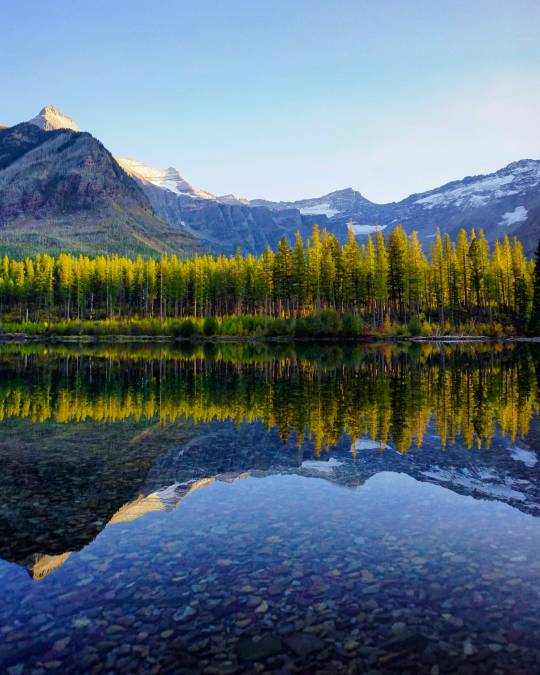
A perfect reflection in Glacier National Park, Montana [OC] [3854x4816]
📷: brodosphotos
23 notes
·
View notes